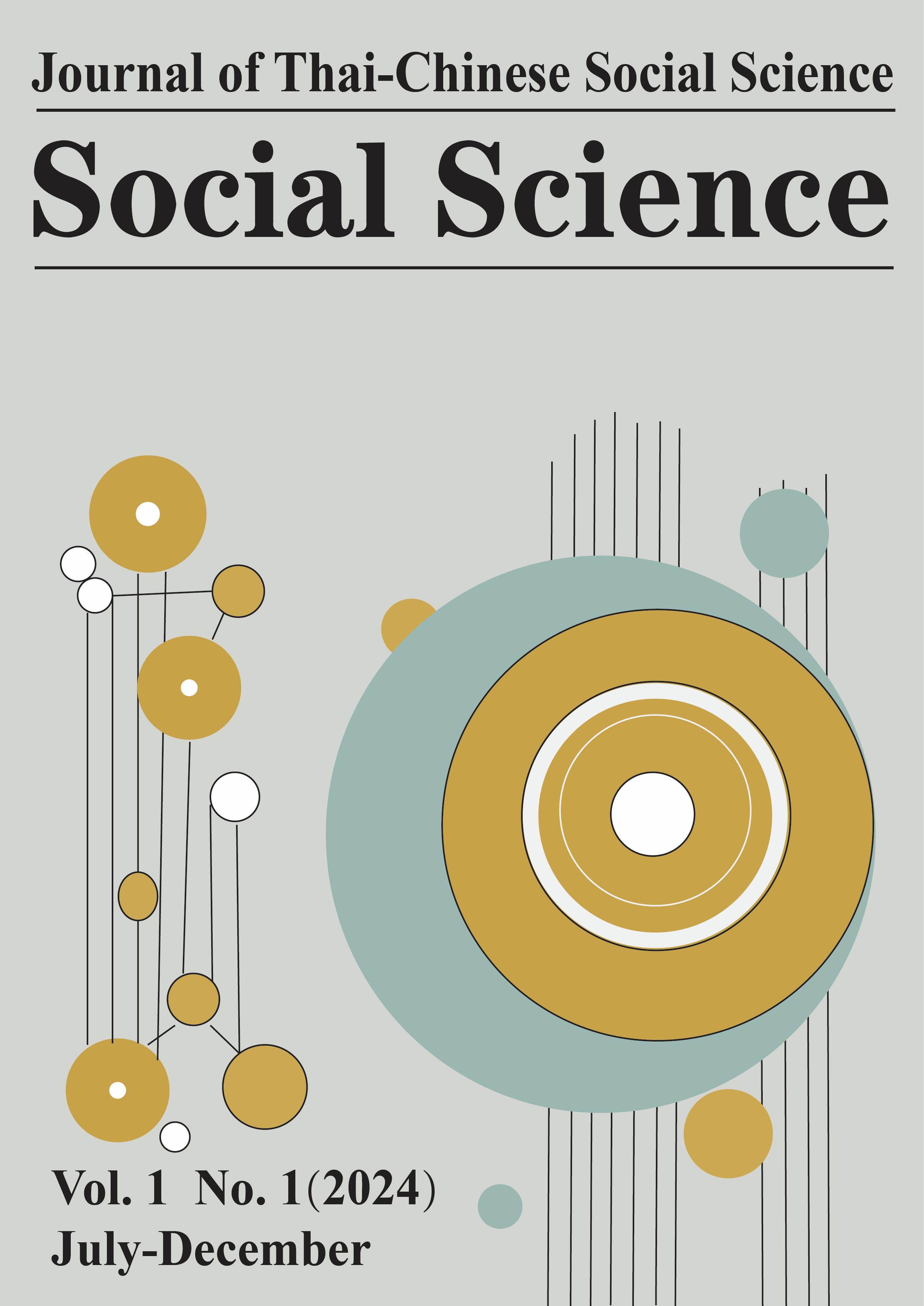Rhetorical Visions and Cross-Cultural Themes in Thai Confucius Institute Promotional Videos: A Fantasy Theme Analysis
Keywords:
Thailand, China, Confucius Institute, symbolic convergence theory, fantasy theme analysisAbstract
The Confucius Institute, as a prominent vehicle of China's soft power, serves a significant function in fostering cross-cultural communication and addressing perceptions related to the "China threat theory." This study employs Fantasy Theme Analysis, grounded in Symbolic Convergence Theory, to examine the fantasy themes and rhetorical visions portrayed in the promotional videos of Confucius Institutes in Thailand. Findings reveal that these videos prioritize the Institute’s authoritative stature, projecting a compelling image of cultural credibility. Furthermore, two key rhetorical visions emerge: one that highlights a "flesh and blood connection between Thailand and China," signifying a deep-rooted bilateral bond, and another that emphasizes how "political and economic power drive the growth of Confucius Institutes," suggesting a strategic alignment with broader diplomatic and developmental goals. However, this analysis also identifies critical limitations in these videos, notably a lack of interactivity and limited engagement with individual perspectives, rendering the narrative somewhat rigid and monolithic. To enhance their effectiveness, future promotional efforts should adopt a multi-layered approach to cross-cultural communication. This would involve integrating diverse media resources and leveraging both mass and interpersonal communication channels. Additionally, promotional content should focus on constructing culturally resonant symbols that Thai audiences can easily recognize and relate to, fostering mutual understanding through interactive and symbol-rich exchanges.
References
Bormann, E. G., Cragan, J. F., & Shields, D. C. (1996). An expansion of the rhetorical vision component of the symbolic convergence theory: The Cold War paradigm case. Communications Monographs, 63(1), 1-28.
Cui, P. (2022). The Role of Confucius Institutes in China-France Cultural and People-to-People Exchanges. Open Journal of Social Sciences, 10(12), 498-509.
Friedberg, A. L. (2018). Competing with China. Survival, 60(3), 7-64.
Hartig, F. (2015). Communicating China to the world: Confucius Institutes and China's strategic narratives. Politics, 35(3-4), 245-258.
Hossain, M., Islam, M. T., Momin, M. A., Nahar, S., & Alam, M. S. (2022). Understanding communication of sustainability reporting: Application of symbolic convergence theory (SCT). In Business and the ethical implications of technology (pp. 257-280). Springer.
Iftikhar, A., & Hanif, B. (2023). Strengthening china-africa ties: unveiling cultural collaboration, media influence, and effective communication strategies. Pakistan Journal of International Affairs, 6(4).
Jung, J.-Y., Wang, W., & Cho, S.-W. (2020). The role of confucius institutes and one belt, one road initiatives on the values of cross-border M&A: empirical evidence from China. Sustainability, 12(24), 10277.
Kreps, G. L., & Kunimoto, E. N. (1994). Effective communication in multicultural health care settings (Vol. 3). Sage Publications.
Lien, D., Oh, C. H., & Selmier, W. T. (2012). Confucius institute effects on China's trade and FDI: Isn't it delightful when folks afar study Hanyu? International Review of Economics & Finance, 21(1), 147-155.
Liu, X. (2017). An alternative framework of analysis to investigate China’s Confucius Institutes: a great leap outward with Chinese characteristics? University of Central Lancashire].
Luqiu, L. R., & McCarthy, J. D. (2019). Confucius Institutes: The successful stealth “soft power” penetration of American universities. The Journal of Higher Education, 90(4), 620-643.
Mearsheimer, J. J. (2014). China's unpeaceful rise. In The realism reader (pp. 464-467). Routledge.
Ngo-Metzger, Q., Massagli, M. P., Clarridge, B. R., Manocchia, M., Davis, R. B., Iezzoni, L. I., & Phillips, R. S. (2003). Linguistic and cultural barriers to care: perspectives of Chinese and Vietnamese immigrants. Journal of general internal medicine, 18, 44-52.
Parkinson, B. (2020). Intragroup emotion convergence: Beyond contagion and social appraisal. Personality and Social Psychology Review, 24(2), 121-140.
Qiao, P., Imron, A., Wiyono, B. B., & Supriyanto, A. (2023). Ten Years of Malang Confucius Institute in Promoting Chinese Language and Culture in Indonesia Higher Education: Its Development and Challenge. Journal of Higher Education Theory and Practice, 23(11).
Samovar, L. A., Porter, R. E., & McDaniel, E. R. (1991). Communication Between Cultures.
Wheeler, A. (2014). Cultural diplomacy, language planning, and the case of the University of Nairobi Confucius Institute. Journal of Asian and African studies, 49(1), 49-63.
Wilson, J. L. (2015). Soft Power: A Comparison of discourse and practice in Russia and China. Europe-Asia Studies, 67(8), 1171-1202.
Yagi, N., & Kleinberg, J. (2011). Boundary work: An interpretive ethnographic perspective on negotiating and leveraging cross-cultural identity. Journal of international business studies, 42, 629-653.
Yuan, Z., Guo, J., & Zhu, H. (2016). Confucius Institutes and the limitations of China’s global cultural network. China Information, 30(3), 334-356.
Zanin, A. C., Hoelscher, C. S., & Kramer, M. W. (2016). Extending symbolic convergence theory: A shared identity perspective of a team’s culture. Small Group Research, 47(4), 438-472.

